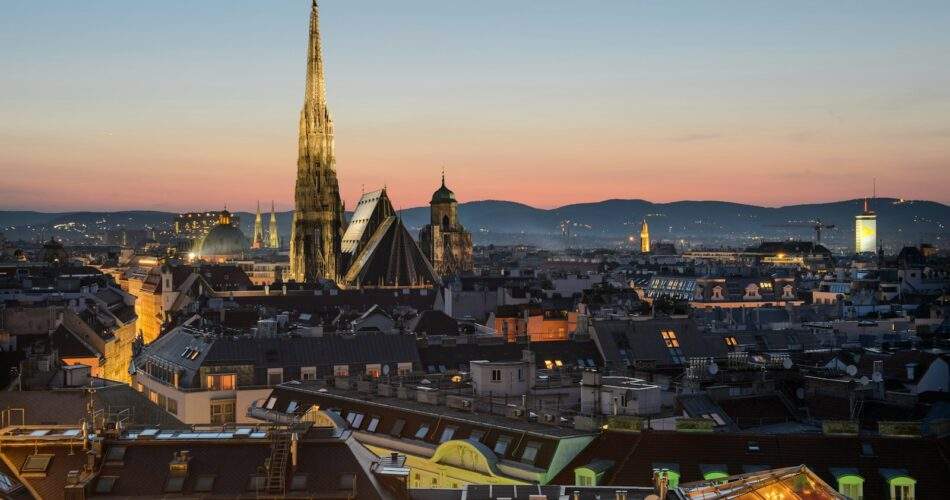Vienna doesn’t announce itself with overwhelming spectacle. Instead, it unfolds slowly, like a conversation over melange that stretches from morning into afternoon. This is a city where Habsburg palaces share sidewalks with brutalist housing blocks, where elderly women in fur coats queue beside tattooed students at the same sausage stand. The Austrian capital rewards those who linger—who understand that its greatest pleasures lie not in checking off monuments, but in adopting the Viennese rhythm of leisurely meals, unhurried walks through Jugendstil courtyards, and fierce debates about which coffeehouse serves the superior apple strudel. There’s an intellectual weight here, a city that produced Freud, Klimt, and the Secession movement, but also an unexpected irreverence that reveals itself in underground clubs housed in former public baths and contemporary art installations inside Baroque churches.
The city transforms dramatically with the seasons, each bringing its own character. Late spring through early autumn—May to September—delivers reliably pleasant weather for exploring on foot, though July and August can feel heavy and warm, sending locals fleeing to alpine retreats while tourists pack the Ringstrasse. September stands out as particularly magical, when the summer crowds thin, the Vienna Boys’ Choir returns from holiday, and the opera season launches with renewed energy.
Winter shouldn’t be dismissed despite the cold. November through December brings Vienna’s famous Christmas markets, transforming squares into glittering villages of mulled wine and handcrafted gifts. The Advent season here feels less commercial than other European capitals, with markets like the one at Spittelberg retaining genuine neighborhood charm. January and February grow quiet and bitterly cold, but hotel prices drop significantly, and you’ll have museums nearly to yourself. March and April can be unpredictable—grey skies punctuated by sudden sunshine—but the city’s coffeehouses feel especially welcoming when rain drizzles outside.
Palace fatigue is real, but Schönbrunn and the Hofburg earn their reputations through sheer audacity of scale and preservation. Instead of rushing through, choose one palace and spend a morning there, then balance imperial excess with Vienna’s thriving contemporary art scene. The MuseumsQuartier, once the imperial stables, now houses the Leopold Museum’s unmatched Schiele collection and the MUMOK’s cutting-edge installations. Between galleries, locals sprawl on the courtyard’s colorful furniture, turning the space into an outdoor living room.
Wander beyond the obvious routes. Spittelberg’s narrow lanes in the seventh district harbor artisan shops and wine taverns that predate Mozart. The Naschmarkt stretches for blocks with produce stalls, spice merchants, and Middle Eastern eateries reflecting Vienna’s Ottoman influences. But slip down to the nearby Freihausviertel on a Saturday morning, where a smaller farmers’ market draws neighborhood residents buying directly from Burgenland vintners and Styrian pumpkin oil producers.
Here’s what guidebooks miss: Vienna’s Gemeindebau—monumental public housing complexes built in the 1920s with fountains, courtyards, and laundries designed like Roman baths. The Karl-Marx-Hof stretches nearly a kilometer, a socialist vision rendered in brick that remains fully inhabited. Locals barely notice these architectural marvels, but they represent Vienna’s progressive interwar period as powerfully as any palace represents imperial might.
Viennese food culture revolves around specific rituals performed at specific times. Morning means a kaiserschmarrn or semmel at a traditional coffeehouse—Café Hawelka or Café Sperl, both gloriously unchanged since the 1950s. The schnitzel question divides locals fiercer than any political debate; purists insist it must be veal, pounded thin, served with lingering potato salad. Figlmüller claims the city’s largest, though neighborhood beisl tucked down side streets often serve better versions.
Sachertorte deserves its fame, but don’t overlook other Viennese sweets: the Esterházy torte’s intricate almond layers, the poppy seed strudel, the vanillekipferl cookies that crumble at first bite. Wine taverns—heurigers—on Vienna’s outskirts serve the young, slightly spritzy wine called sturm in autumn, accompanied by cold cuts and pickles. The city’s modern dining scene thrives in Neubau, where places like Lingenhel combine traditional ingredients with contemporary technique.
For accommodations, the Innere Stadt places you within walking distance of major sights but feels tourist-focused. Neubau and Josefstadt—the seventh and eighth districts—offer residential charm with excellent transit connections, vintage shops, and neighborhood restaurants. Leopoldstadt, across the canal, attracts younger travelers with its proximity to the Prater and emerging bar scene. The areas near Naschmarkt in the fourth and sixth districts split the difference: central enough for convenience, local enough for authentic daily life.
